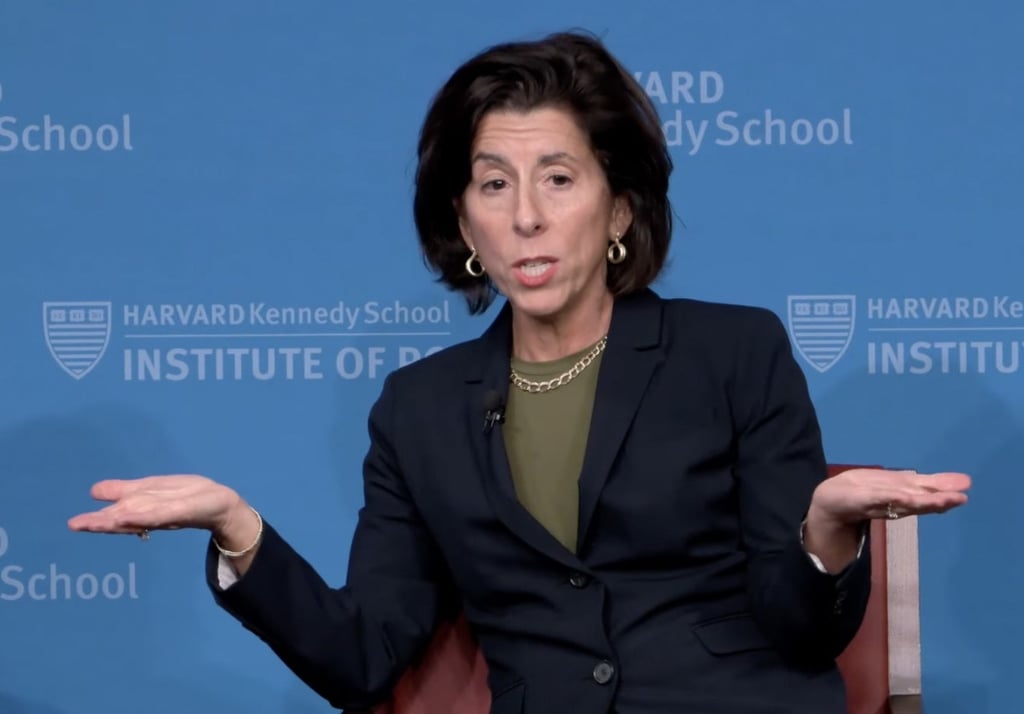Report on the Impact of Federal Funding for Clean Transportation Infrastructure
Introduction: Aligning Infrastructure Investment with Sustainable Development Goals
A recent report, “Clean Transportation Works: An Analysis of U.S. Investments,” by the Coalition Helping America Rebuild and Go Electric (CHARGE), evaluates the effects of federal programs established by the Infrastructure Investment and Jobs Act (IIJA) and the Inflation Reduction Act (IRA). The findings indicate that these investments are pivotal in advancing several United Nations Sustainable Development Goals (SDGs), particularly those related to infrastructure, economic growth, and sustainable communities.
- SDG 9 (Industry, Innovation, and Infrastructure): The programs directly support the development of resilient, sustainable, and innovative transportation infrastructure.
- SDG 11 (Sustainable Cities and Communities): Investments in public transit, electric vehicles (EVs), and active mobility options like bike lanes and sidewalks contribute to creating inclusive, safe, and sustainable urban environments.
- SDG 13 (Climate Action): The transition to cleaner transportation is a critical strategy for reducing national greenhouse gas emissions.
Economic Growth and Employment: Progress Towards SDG 8
Stimulating Private Investment and Job Creation
The report underscores the role of federal spending in fostering economic activity and creating employment opportunities, directly contributing to SDG 8 (Decent Work and Economic Growth).
- Job Creation Potential: Full expenditure of funds allocated to the National Electric Vehicle Infrastructure (NEVI) program and community charging initiatives is projected to create approximately 11,200 jobs.
- Leveraging Private Capital: Public funding has catalyzed significant private sector engagement. As of June, private entities have announced $426 million in investments for the U.S. EV charging market.
- Domestic Manufacturing Growth: A comprehensive implementation of the clean transportation vision could stimulate up to $4.6 billion in domestic manufacturing investments, supporting an additional 14,400 jobs.
Infrastructure Modernization: Advancing SDG 7 and SDG 9
Analysis of the National Electric Vehicle Infrastructure (NEVI) Program
The NEVI program is a cornerstone of the strategy to build modern, clean energy infrastructure, aligning with SDG 7 (Affordable and Clean Energy) and SDG 9. However, its implementation is in the early stages.
- Allocated Funding: The IIJA allocated $5 billion to the NEVI program.
- Funds Disbursed: To date, only $526 million has been obligated, with just $44 million expended.
- Operational Infrastructure: Currently, 370 NEVI-funded fast chargers are operational at 84 locations, indicating that the majority of the network build-out is yet to be completed.
Challenges to Sustainable and Equitable Development
Policy Shifts and Funding Instability
The report notes that recent administrative actions pose risks to the continued progress of these programs and their alignment with sustainable development principles, particularly SDG 11’s emphasis on equity.
- Programmatic Adjustments: The current administration has halted funding for some initiatives, altered program guidelines, and rejected provisions aimed at ensuring equity and environmental justice.
- Funding Rescission: A significant setback was the rescission of $2.7 billion from the Neighborhood Access and Equity Grant Program, which was designed to improve access and equity in community infrastructure.
Conclusion: The Case for Sustained Investment
Recommendations for Policy Stability
The CHARGE coalition’s report concludes that sustained federal support for clean transportation is essential for achieving long-term economic, social, and environmental goals. Policy stability is identified as a critical factor for ensuring continued private investment and realizing the full potential of these initiatives in line with the Sustainable Development Goals.
- Continue federal funding authorizations to maintain momentum.
- Provide stable policy frameworks to secure and expand private investment.
- Emphasize the proven benefits of these programs, including job creation, infrastructure modernization, and progress on climate action.
Analysis of Sustainable Development Goals in the Article
1. Which SDGs are addressed or connected to the issues highlighted in the article?
-
SDG 8: Decent Work and Economic Growth
The article directly connects infrastructure investment to job creation. It mentions that federal spending on clean transportation projects creates jobs, citing specific numbers like “11,200 jobs” and “more than 14,400 jobs” that could be generated. This focus on employment as a result of economic activity aligns with SDG 8.
-
SDG 9: Industry, Innovation, and Infrastructure
This is a central theme of the article. The entire discussion revolves around federal programs like the Infrastructure Investment and Jobs Act (IIJA) aimed at developing “tomorrow’s transportation infrastructure.” It specifically highlights the development of “EV charging infrastructure,” “upgrades to public transit, bike lanes, sidewalks,” which are key components of building resilient, sustainable, and innovative infrastructure.
-
SDG 11: Sustainable Cities and Communities
The article’s focus on “cleaner transportation solutions” and “upgrades to public transit, bike lanes, sidewalks” directly addresses the goal of making cities and human settlements more sustainable. These initiatives aim to improve the “mobility landscape” and provide access to sustainable transport systems, which is a core component of SDG 11.
-
SDG 17: Partnerships for the Goals
The article emphasizes the relationship between public funding and private sector engagement. It states that “publicly funded charging programs have a way of advancing private investment” and cites that “the private sector had announced some $426 million in investment for the EV charging market.” This dynamic between government (federal programs) and private industry to achieve development goals is the essence of SDG 17.
2. What specific targets under those SDGs can be identified based on the article’s content?
-
SDG 8: Decent Work and Economic Growth
- Target 8.2: Achieve higher levels of economic productivity through diversification, technological upgrading and innovation. The article supports this by discussing the transition to “cleaner mobility” and “electrified transportation,” which represent technological upgrading in the transportation sector, leading to new jobs and investments.
- Target 8.5: By 2030, achieve full and productive employment and decent work for all. The article’s repeated emphasis on “job creation” and providing specific figures for potential employment (“11,200 jobs,” “14,400 jobs”) directly relates to this target.
-
SDG 9: Industry, Innovation, and Infrastructure
- Target 9.1: Develop quality, reliable, sustainable and resilient infrastructure… to support economic development and human well-being. The article’s focus on the Infrastructure Investment and Jobs Act (IIJA) and the National Electric Vehicle Infrastructure (NEVI) program, which aim to build a national network of EV chargers and upgrade public transit, directly aligns with this target.
-
SDG 11: Sustainable Cities and Communities
- Target 11.2: By 2030, provide access to safe, affordable, accessible and sustainable transport systems for all. The article mentions federal programs funding “upgrades to public transit, bike lanes, sidewalks and more,” which are all measures aimed at creating sustainable and accessible transport systems for communities.
-
SDG 17: Partnerships for the Goals
- Target 17.17: Encourage and promote effective public, public-private and civil society partnerships. The article provides a clear example of this by explaining how federal funding from programs like NEVI spurs “private investment,” with the private sector committing “$426 million” to the EV charging market.
3. Are there any indicators mentioned or implied in the article that can be used to measure progress towards the identified targets?
-
SDG 8: Decent Work and Economic Growth
- Indicator: Number of jobs created. The article explicitly states that spending all allocated funds for charging programs “translates to about 11,200 jobs” and that fully implementing the clean transportation vision could contribute to “more than 14,400 jobs.”
-
SDG 9: Industry, Innovation, and Infrastructure
- Indicator: Investment in infrastructure and progress of development. The article provides several metrics: the goal of a “network of 500,000 EV fast chargers,” the current status of “370 NEVI-funded fast chargers now open and in operation at 84 locations,” and the total allocated funding of “$5 billion allocated to NEVI.”
-
SDG 11: Sustainable Cities and Communities
- Indicator: Financial resources allocated to sustainable transport. The article mentions the “$2.7 billion in funding from the Neighborhood Access and Equity Grant Program,” which, although rescinded, serves as an indicator of the financial scale intended for improving access to sustainable transport.
-
SDG 17: Partnerships for the Goals
- Indicator: Amount of private investment mobilized by public funding. The article provides a precise figure: “$426 million in investment for the EV charging market” announced by the private sector as a result of public initiatives. It also mentions a potential “$4.6 billion in domestic manufacturing investments” as a trickle-out effect of federal spending.
4. Summary Table of SDGs, Targets, and Indicators
| SDGs | Targets | Indicators |
|---|---|---|
| SDG 8: Decent Work and Economic Growth | 8.5: Achieve full and productive employment and decent work for all. |
|
| SDG 9: Industry, Innovation, and Infrastructure | 9.1: Develop quality, reliable, sustainable and resilient infrastructure. |
|
| SDG 11: Sustainable Cities and Communities | 11.2: Provide access to safe, affordable, accessible and sustainable transport systems for all. |
|
| SDG 17: Partnerships for the Goals | 17.17: Encourage and promote effective public, public-private and civil society partnerships. |
|
Source: govtech.com







